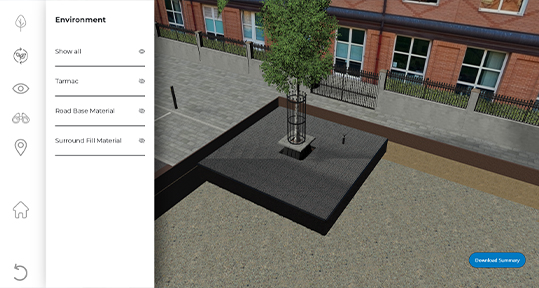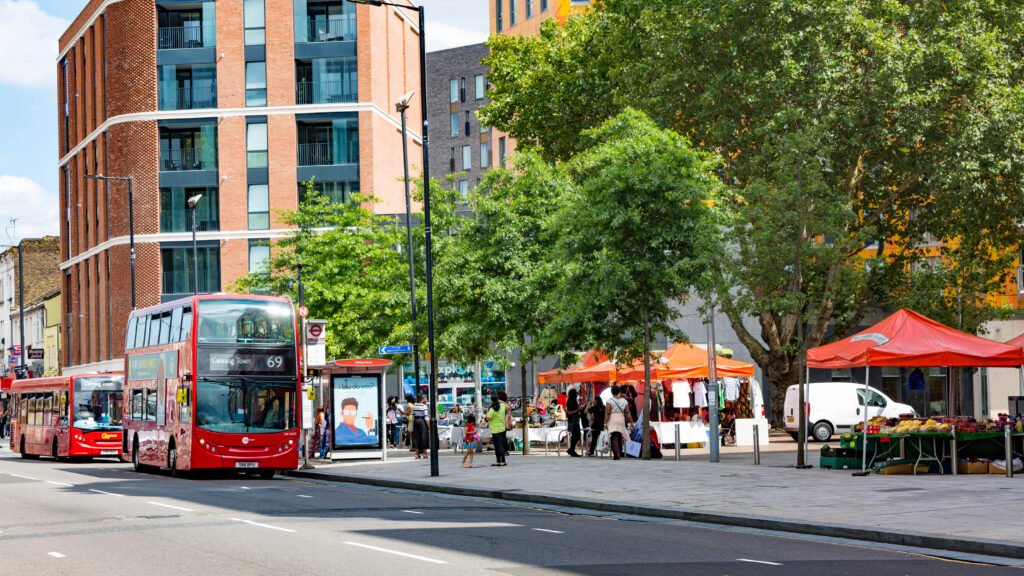The construction of the M5 motorway in South West England between 1962 and 1975 provided a direct route from the Midlands to Devon and Cornwall, opening up a new era in holiday making and leisure travel.
The construction of the M5 motorway in South West England between 1962 and 1975 provided a direct route from the Midlands to Devon and Cornwall, opening up a new era in holiday making and leisure travel. By-passing Exeter to the East, like many such projects, also changed local landscapes in many ways, dissecting communities, blocking wildlife routes and separating homes from businesses. It also opened previously inaccessible land for development, offering employment and housing opportunities.
The land to the east of the M5 and north of the A30 was one of these parcels of land and has been developed jointly with Devon County Council, the University of Exeter, Exeter City Council and East Devon District Council. This Science Park provides facilities where ideas generated at the University can be progressed, commercialised, and well known for the innovations that businesses can generate.
In the original brief, green infrastructure and healthy tree planting were a must if this Science Park was to be more sustainable than other commercial estates. From early design sketches, GreenBlue Urban worked with the landscape architects and planners LHC (Exeter office) to ensure that excellent tree rooting provision was made and that these newly planted trees will achieve healthy maturity – both in private car parks and in the public realm.
Project
Location
Contractor
Landscape Architect
The construction of the M5 motorway in South West England between 1962 and 1975 provided a direct route from the Midlands to Devon and Cornwall, opening up a new era in holiday making and leisure travel.
The construction of the M5 motorway in South West England between 1962 and 1975 provided a direct route from the Midlands to Devon and Cornwall, opening up a new era in holiday making and leisure travel. By-passing Exeter to the East, like many such projects, also changed local landscapes in many ways, dissecting communities, blocking wildlife routes and separating homes from businesses. It also opened previously inaccessible land for development, offering employment and housing opportunities.
The land to the east of the M5 and north of the A30 was one of these parcels of land and has been developed jointly with Devon County Council, the University of Exeter, Exeter City Council and East Devon District Council. This Science Park provides facilities where ideas generated at the University can be progressed, commercialised, and well known for the innovations that businesses can generate.
In the original brief, green infrastructure and healthy tree planting were a must if this Science Park was to be more sustainable than other commercial estates. From early design sketches, GreenBlue Urban worked with the landscape architects and planners LHC (Exeter office) to ensure that excellent tree rooting provision was made and that these newly planted trees will achieve healthy maturity – both in private car parks and in the public realm.
Project
Location
Contractor
Landscape Architect
Project
Location
Contractor
Landscape Architect
Working with the main contractors on each phase of the project has meant that the results are already showing themselves – early installations in car parking areas in Babbage Way, installed by Kier Construction using the GreenBlue Urban StrataCell soil cell system in the public realm areas of the initial office and laboratory blocks are proving to have been very effective, with 24 large trees in these hard paved areas bringing the multiple benefits that only healthy trees can.
As the project rolled out, one of the site’s main features was the new link road, complete with a new road bridge over the motorway, joining the Science Park with the residential area of Monkerton, west of the M5. This reconnection will allow workers at the Park to safely get to work and home without having to battle through the very busy motorway roundabout at J29. This link road, now known as Tithebarn Way has allowed additional residential development, which has become very popular, having excellent road access, two railway stations within 10 minutes drive and the Exeter airport is only a couple of miles down the road. A new pedestrian and cycle link has also been constructed, the Redhayes Bridge, giving a safe and direct route for those travelling sustainably, avoiding vehicular traffic.
Working with the main contractors on each phase of the project has meant that the results are already showing themselves – early installations in car parking areas in Babbage Way, installed by Kier Construction using the GreenBlue Urban StrataCell soil cell system in the public realm areas of the initial office and laboratory blocks are proving to have been very effective, with 24 large trees in these hard paved areas bringing the multiple benefits that only healthy trees can.
As the project rolled out, one of the site’s main features was the new link road, complete with a new road bridge over the motorway, joining the Science Park with the residential area of Monkerton, west of the M5. This reconnection will allow workers at the Park to safely get to work and home without having to battle through the very busy motorway roundabout at J29. This link road, now known as Tithebarn Way has allowed additional residential development, which has become very popular, having excellent road access, two railway stations within 10 minutes drive and the Exeter airport is only a couple of miles down the road. A new pedestrian and cycle link has also been constructed, the Redhayes Bridge, giving a safe and direct route for those travelling sustainably, avoiding vehicular traffic.
Tithebarn Way was planned to be a tree-lined road, with an avenue of 36 trees in soft verges where possible, and where not, another 18 installed in a full GreenBlue Urban ArborSystem solution, using RootSpace soil cells, Root Directors, RootRain irrigation systems and Ductile Avon Tree Grilles to support the 15 newly planted trees.
Some of these installations are used to help separate cyclists and pedestrians, whilst others are planted within the hard to soften the general appearance. The detailed design for this was done by Devon County Council and the installation by SWH Contracting.
The knowledge that these trees have good soil volumes in the most innovative soil support system in the world gives reassurance that these trees will thrive and become the asset that they need to be. The peace of mind that comes from using a tried and tested methodology, where natural forest floor soil conditions are replicated below ground, means that the risk element of urban tree planting is removed as far as possible. Less risk means less liability, leading to fewer maintenance expenses long term, and helping these new developments not only get closer to Nett Zero but to make sure that they are climate change resilient – healthy places for future generations.
Tithebarn Way was planned to be a tree-lined road, with an avenue of 36 trees in soft verges where possible, and where not, another 18 installed in a full GreenBlue Urban ArborSystem solution, using RootSpace soil cells, Root Directors, RootRain irrigation systems and Ductile Avon Tree Grilles to support the 15 newly planted trees.
Some of these installations are used to help separate cyclists and pedestrians, whilst others are planted within the hard to soften the general appearance. The detailed design for this was done by Devon County Council and the installation by SWH Contracting.
The knowledge that these trees have good soil volumes in the most innovative soil support system in the world gives reassurance that these trees will thrive and become the asset that they need to be. The peace of mind that comes from using a tried and tested methodology, where natural forest floor soil conditions are replicated below ground, means that the risk element of urban tree planting is removed as far as possible. Less risk means less liability, leading to fewer maintenance expenses long term, and helping these new developments not only get closer to Nett Zero but to make sure that they are climate change resilient – healthy places for future generations.






